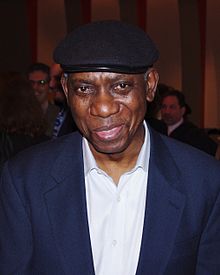If there is no rhythm, there is no God. – Derek Walcott
A sad day it was when learning by rote went out of fashion – after all, acquiring native and other languages is one long, elaborate, ongoing process of memorizing – words, structures, idioms. Then there’s math and periodic tables, definitions, user instructions, recipes, important addresses and telephone numbers. I am always amazed when my 16-digit phone card number instructs my fingertips as I dial my sister in Jamaica, overriding worries that I’ve forgotten it. Long gone – I hope long gone – is the concern of educators who thought we’d be damaged by being obliged to learn things by heart. Memorizing is here to stay. In addition to the above, we’ve learned too many proverbs, songs, hymns, chants, and wise sayings that way…
Sorry. Rhyme often creeps upon me. That’s just as well, for into this brief discourse I wish to slide the matters of the two Rs, rhyme and rhythm. I’m a big fan of both, perhaps because I write poetry for children as well as the adult stuff. They love the music of those Rs as utterly as they love jokes, which I throw into the mix when the Muse of Hilarity is about. See “Toes Knows” here http://www.pamelamordecai.com/hello-world/#more-1 Rhyme and rhythm are mnemonic devices, as any parent or teacher of reading, or anyone who’s ever watched Sesame Street knows. It’s worth learning a poem by heart for there’s no power like that of letting your internal or external voice recall and rehearse words with the measure of moans and mirth those two Rs can conjure.
But alas, there’s the danger of doggerel once a poet gets into words metred and rhymed! Thus, not every poem profilin g the two Rs is a poem that deserves to be committed to memory. Rhyming is a heady but dangerous business, and if you are not Keats or Walcott orJane King, you should tiptoe around end rhymes. Run-on lines are saviours, as also slant rhyme, and rhymes in places other-than-the-end-of-lines. As for measure, it is there to be crossed, fractured, all shook up for the poem’s purpose.
g the two Rs is a poem that deserves to be committed to memory. Rhyming is a heady but dangerous business, and if you are not Keats or Walcott orJane King, you should tiptoe around end rhymes. Run-on lines are saviours, as also slant rhyme, and rhymes in places other-than-the-end-of-lines. As for measure, it is there to be crossed, fractured, all shook up for the poem’s purpose.
The truth is these two Rs are playmates. If you frolic with them long enough they can lead you into the ways of meaning, and in the last analysis, what makes the poem is the depth and breadth of the subject that rhyme and rhythm are servicing; it is how these Rs transmit image and word play; it is how they convey the meat that metaphor explores. So Alfred Lord Tennyson’s “The Brook” http://www.poemhunter.com/poem/the-brook-2/ is not as fine a poem as Edward Thomas’s “The Brook” http://www.poemhunter.com/poem/the-brook-6/. “Trees” by Joyce Kilmer http://www.poemhunter.com/poem/trees/, though much beloved, wont bear comparison with Housman’s, “Loveliest of trees, the cherry now.” http://www.poemhunter.com/poem/loveliest-of-trees-the-cherry-now/ William Shakespeare and William Blake, Philip Larkin, Gerald Manley Hopkins, Louise Bennett and Derek Walcott show us what poems can be, even if one is working within the most traditional constraints.
The truth is also that what seems to be free verse is often hiding metre in plain view. Nose through Yusef Komunyakaa’s “Envoy to Palestine”and find the iambics. http://www.poetryfoundation.org/poetrymagazine/poem/247308 Ignore the line breaks and scan the lines as they run on. Hear the half rhymes – wheat and beneath (full rhymes for a creole speaker like me), coat and lute, and the complete
The Rs live in language. It’s tough to escape them. So let’s learn poems by heart so we can taste them as and when we like.